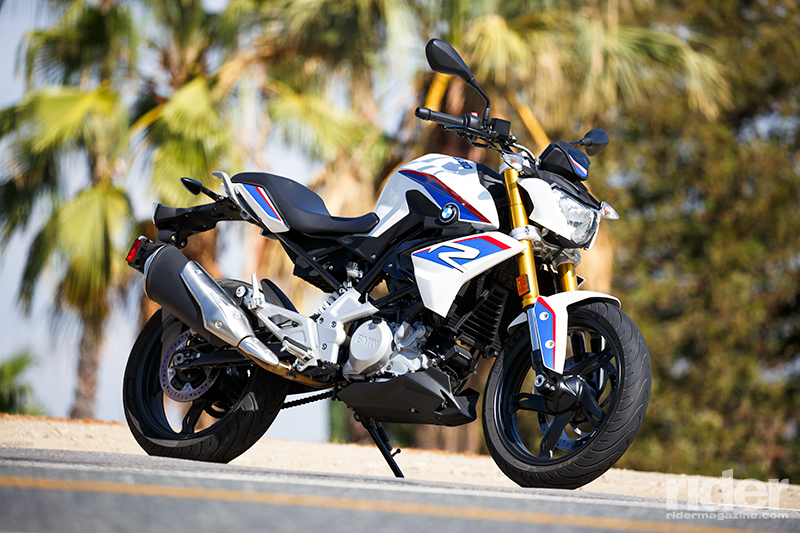
I’ve always enjoyed riding smaller bikes. Part of that comes from not being terribly large, but it’s also because it’s just fun to fling them around corners and through traffic, and parking lot maneuvers are a breeze. Having 160 horsepower on tap is fun too, but let’s face it—unless you’re a 1-percenter of the professional racing variety, you’re never going to be able to ride a bike like that to its full potential. On a small bike, even riders of average ability can feel confident in pushing their mount’s limits, building their skills and having plenty of fun without things getting too far out of hand.
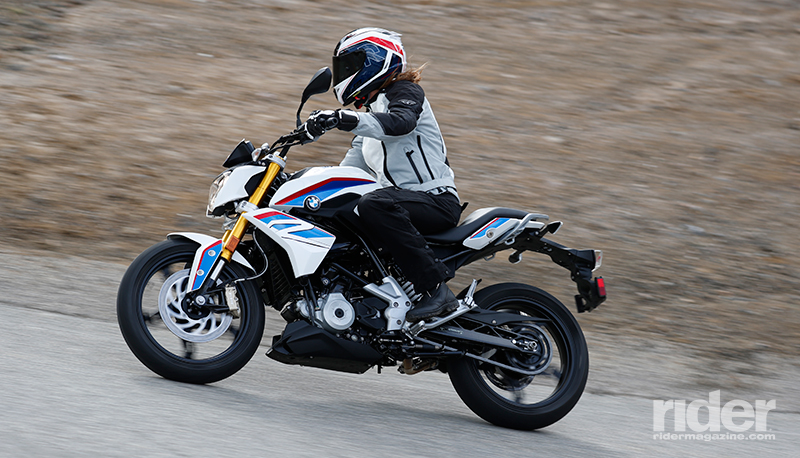
There is such a thing as a boring small bike, however, and that’s not much fun at all. Fortunately, the new G 310 R from BMW is far from boring. In fact, it just might surprise you. The G 310 R is BMW’s first entry into the growing sub-500cc segment, and BMW says it was designed for “world markets”—which means places like Brazil and India, where small bikes rule. The G 310 R offers riders a premium option that is still within reach. To that end, while it was engineered entirely in Germany, BMW partnered with Indian motorcycle manufacturer TVS, which churns out more than 2 million bikes per year, to build it. At a U.S. retail price of $4,750, it is certainly an attractive option and is on par with its competition.
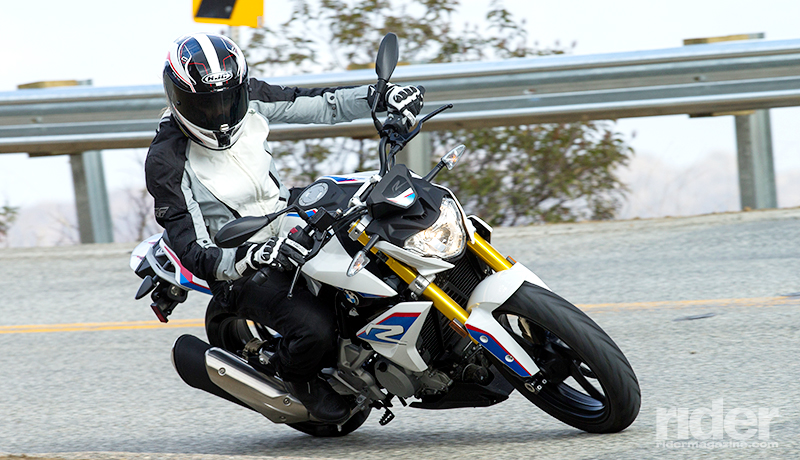
We got our first taste of this new littlest BMW at the global launch held, conveniently enough, in our backyard: Los Angeles. The route BMW laid out would take us through the choked city streets of West Hollywood, on the crowded U.S. Route 101 freeway, into the Santa Monica Mountains on the famous Mulholland Highway and along the Pacific Coast Highway through Malibu. This would be a very “real-world” test.
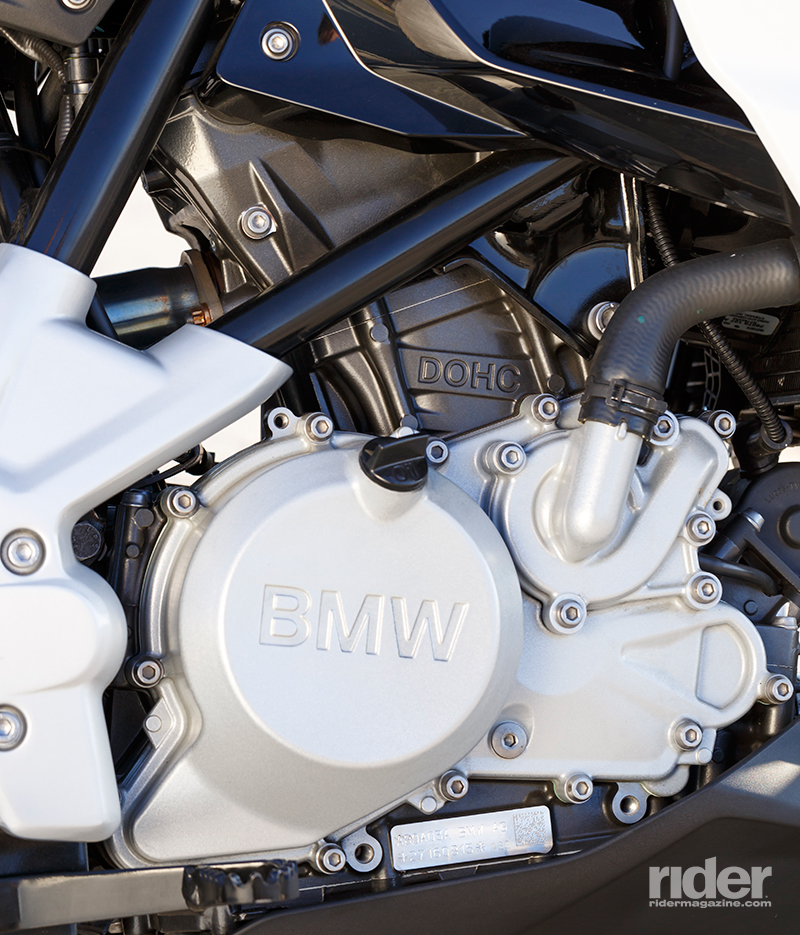
The G 310 R seems bigger than it is, and BMW says that was intentional. It wanted the G 310 R to look and feel like a full-size bike, and impart a feeling of stability. Its tubular steel frame was designed to take on the punishing roads of India, so a few potholes and choppy pavement in the Hollywood Hills would be no problem.
Indeed, my first impression of the bike’s handling was one of pleasant surprise. With such a solidly built frame and a long swingarm, the G 310 R exhibited little to no flex as I pushed it through the never-ending curves in the mountains. When building a bike to a price point or labeling it “entry-level,” manufacturers often make suspension the first compromise. Not so with the G 310 R; BMW bestowed this little bike with quality Kayaba components, including an upside-down 41mm fork with 5.5 inches of travel and a 7-position preload-adjustable rear shock with 5.2 inches of travel. It handled better than many of the larger middleweight machines I’ve been testing lately.
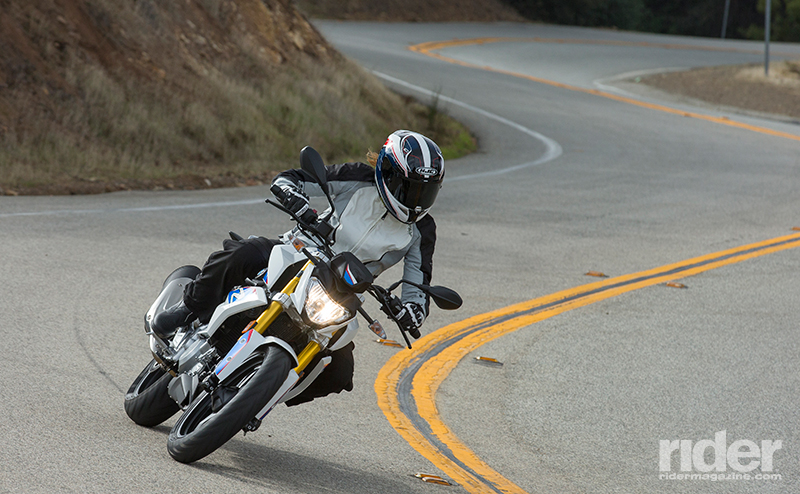
Powering the G 310 R is an all-new, 313cc liquid-cooled single cylinder engine that BMW says is good for 34 horsepower and 20.7 lb-ft of torque. It’s a sophisticated little thing, with DOHC and 4 valves, and many of its internals such as the camshafts and DLC (Diamond-Like Carbon) coated rocker arms are based on those used in the S 1000 RR. It handled the California freeways without breaking a sweat, settling smoothly into its sixth gear and humming along with traffic at 75 mph.
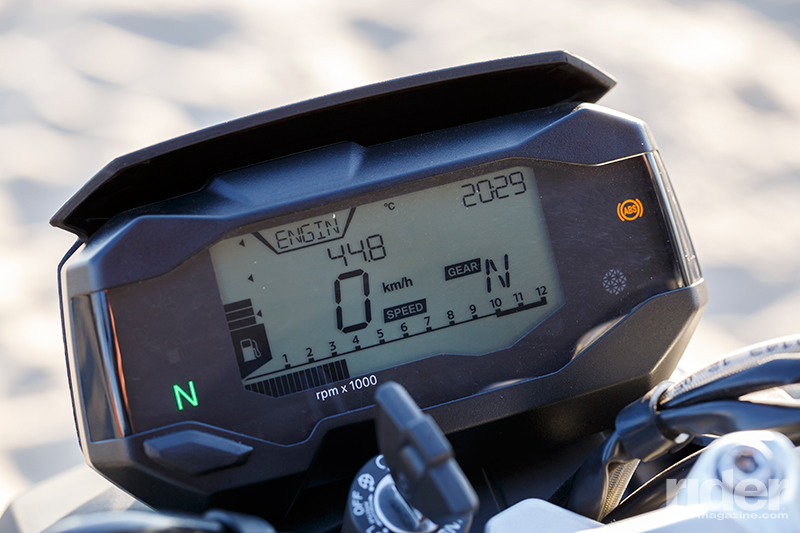
A rotating counterbalancer in front of the crankshaft tames much of the vibration, and for the most part the G 310 R delivered a smooth ride, only becoming buzzy in the upper limits of the rev range. Neutral could be a bit elusive at stops, but that might be attributable to the newness of the engine; my test bike had less than 300 miles on it.
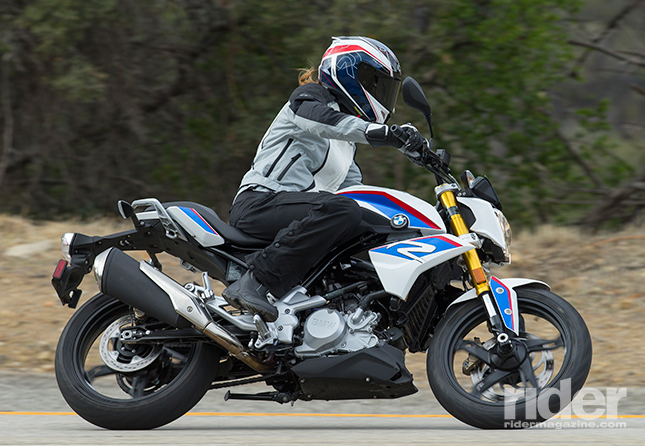
A bike with such good performance and handling deserves equally good brakes, and BMW once again delivered. The G 310 R is fitted with stainless steel brake lines, a big 300mm disc up front squeezed by a 4-piston caliper, and a 240mm disc in back fitted with a 2-piston caliper. BMW 2-channel ABS is standard. The combination works very well, with plenty of bite for aggressive sport riding and good feel at the lever, although I wish it were adjustable. I found the position to be just a bit too far away for my female-sized hands, and it seems like a strange oversight for a bike that will appeal to smaller riders. But it’s a minor complaint on an otherwise well-thought-out machine.
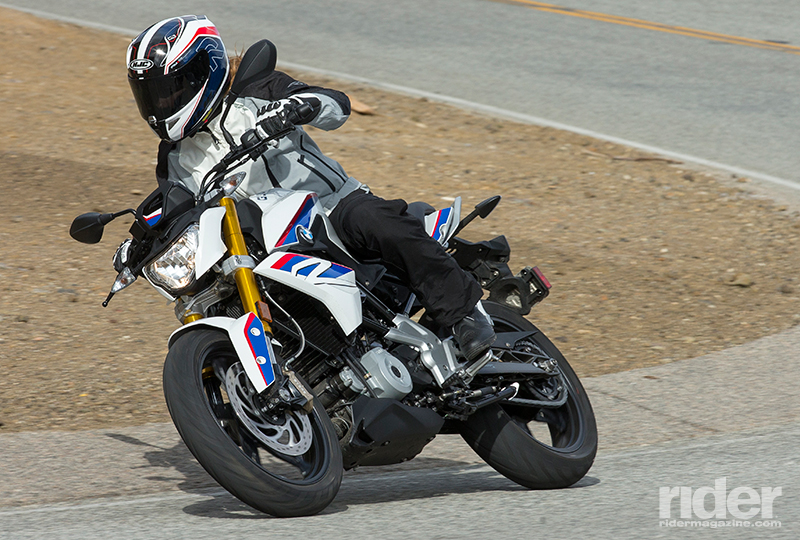
BMW claims that the G 310 R will return fuel economy in the range of 70-75 mpg, so with its 2.9-gallon gas tank it would be good for 200 miles or more between fill-ups. According to the digital display on my test bike, I was averaging more like 64 mpg, but then again we were pushing the pace and having a lot of fun—and let’s face it, 64 mpg isn’t so bad! At 350 pounds (claimed, wet) and with a seat height of 30.9 inches, the G 310 R should make a stellar urban commuter.
We won’t see G 310 Rs in BMW dealerships until the summer of 2017, but until then you can decide which color you’d like—Cosmic Black/Polar White, Strato Blue or, our favorite, Pearl White with BMW Motorsports red and blue accents—and start making room in the garage. Even if you never thought you’d own a BMW, the G 310 R is worth a look if you’re in the market for a small, fun ride.
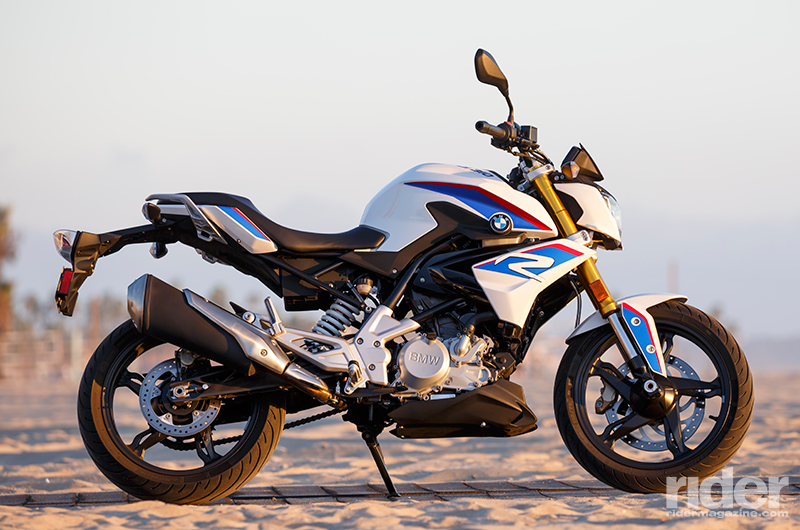
2018 BMW G 310 R Specs
Base Price: $4,750
Website: bmwmotorcycles.com
Engine Type: Liquid-cooled, DOHC single w/ 4 valves
Displacement: 313cc
Bore x Stroke: 80.0 x 62.0mm
Transmission: 6-speed, wet multi-plate clutch
Final Drive: O-ring chain
Wheelbase: 54.1 in.
Rake/Trail: 25.1 degrees/4.7 in.
Seat Height: 30.9 in.
Claimed Wet Weight: 350 lbs.
Fuel Capacity: 2.9 gals.
MPG: NA
Jenny’s Gear:
Helmet: HJC RPHA Pro 11
Jacket: Fly Butane
Pants: Joe Rocket Alter Ego
Boots: Sidi Livia Rain

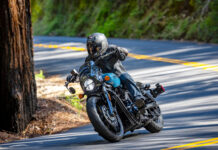






I too like small bikes. I understand that they are meant to be economical. I’d like to see an accessory suspension package available. Have retrofitted a fully adjustable suspension on a “small” bike I can tell you I won’t do it again. The expense and fiddling took all the pleasure out of it. I have several bikes, not having fully adjustable suspension is a show stopper for me.
Hi, why no video review for this bike? None of the reviewers had GoPro it seems.
BMW didn’t provide video support on this launch, but once the bike is available for longer-term testing I’m sure you’ll start seeing video reviews.
Any probable dates for video review? I mean you will be doing it too,right?
If we get a test bike, sure, we’ll do a video review. Given that the bike won’t be available until summer of 2017, I’m not sure when we might see some testers…spring is likely the earliest. Stay tuned…
Thanks.
Atleast this bike is doing review rounds in your country.
Its being manufactured in India and still no bike available for review here. No advertisement or anything promotions here as of now.
How about cargo capacity, grocery store visits?
Do you guys see this keeping it’s resale value a little bit better than other entry bikes? Reentry rider. 57 years old but spent the last 30 years on 4 wheels but for a dozen little trips. Rode constantly as a youngin but got slammed by a drunk driver so laid off for a while. Was looking at the Triumphs but this looks like a better reentry point for the first year. Any opinions?
I wish manufacturers would do away with the boy racer graphics they seem to believe is desirable to the buying public.
Is this available in Bhopal
the light system is poor